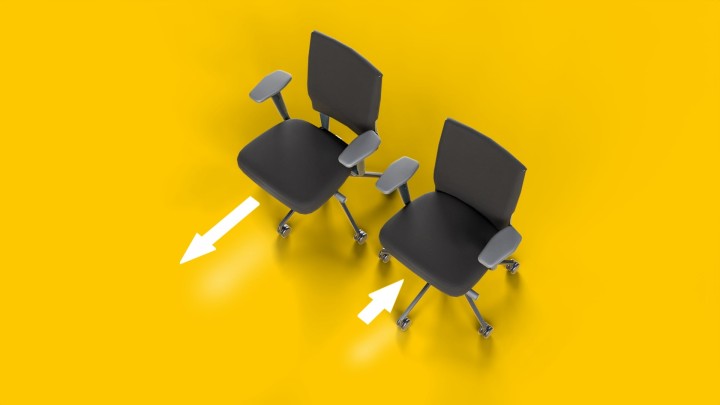Many ergonomic office chairs from pro office have the seat depth adjustment function. The optimum seat depth is defined by the length of the thighs; there should be a space of about three to four fingers' width between the back of the knee and the seat. When adjusting the chair, you should sit directly against the backrest. Blood circulation must not be pinched off by incorrect adjustment of the chair, otherwise the necessary blood volumes cannot pulsate and supply the surrounding tissue with sufficient oxygen. Circulatory disorders can announce themselves through pale skin areas, numbness and cold limbs and, in the worst case, cause a stroke or heart attack.
More seating comfort due to seat depth adjustment
For good blood circulation, your thighs should not be squeezed off the office chair. Upper and lower legs should be at a 90 degree angle to each other. Your feet must be touching the floor. If the seat depth is too great, you will slide forward so that your spine is no longer supported by the furniture. A seat that is too short means that your thighs can no longer rest comfortably on the seat.
Settings for ergonomic sitting
Within a family, i.e. if necessary also in the home office, it may happen that people of different sizes use the chair. In this case, the optional seat depth adjustment is particularly useful. Even if you are above or below average height, the seat depth adjustment means a big plus in comfort, because most items are made for the average size. German men are relatively far ahead in the size scale with an average of 1.80 meters. For more information, please contact your pro office store!





